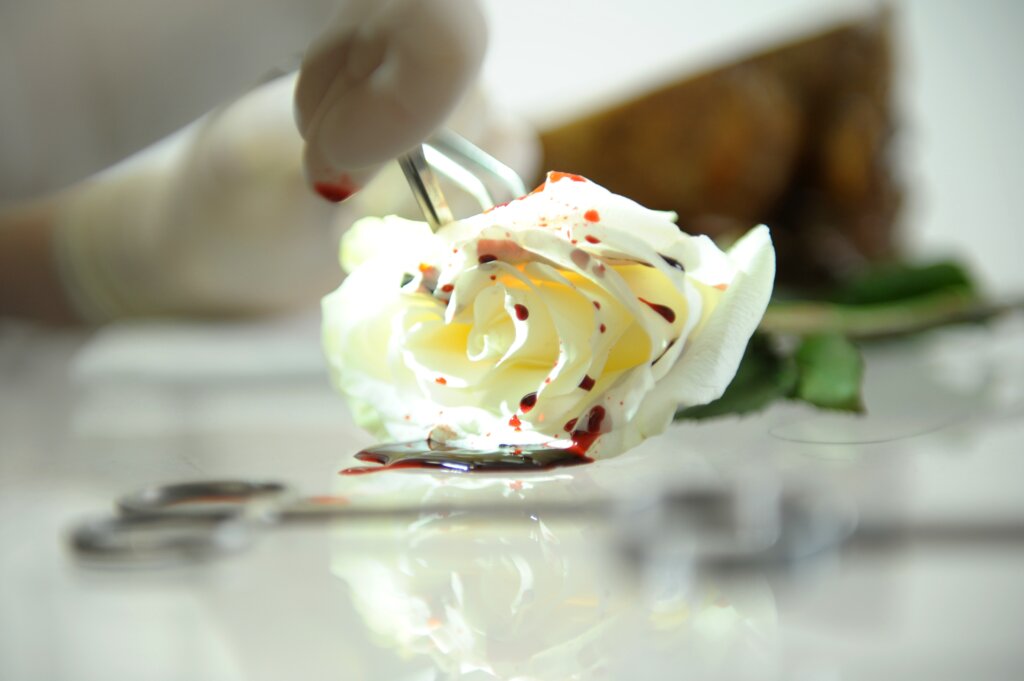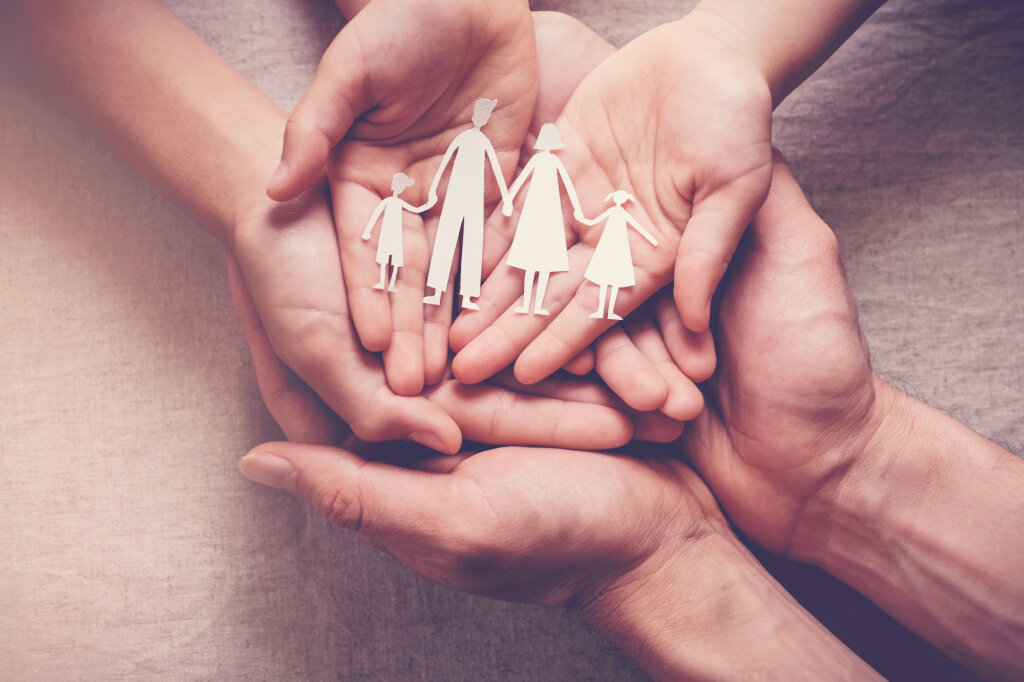Adolescents Who Self-Harm: Why Do They Do It and What Can Be Done?


Written and verified by the psychologist Gorka Jiménez Pajares
Today, increasingly more adolescents are resorting to self-harm to face difficulties in their lives. By self-inflicting physical harm (for example, through small cuts), they manage to lessen the psychological pain they feel. This reduces their feelings of anguish. In fact, self-harm could be seen as a behavior that exerts an intense narcotic effect on these individuals.
Self-harm consists of an injury caused voluntarily by the person themselves. It’s voluntary and the goal is far from suicidal. As a matter of fact, it’s extremely important to differentiate self-harm from suicidal behavior. This is because the objective of self-harm is far from being to end one’s own life. Indeed, paradoxically, when self-harming, the adolescent is seeking to make ‘life hurt less’.
“The scars you can’t see are the ones that hurt the most.”
-Michelle Hodkin-
Self-harm: a dangerous lifeboat
As a result of the increasing number of cases of young people reporting self-harm behaviors, it’s considered to be a global public health problem today (Zaragozano, 2017). Among the most common self-harming behaviors are cuts and skin wounds, burns, the pulling out of hair, scratching, or ingesting toxic substances.
Sometimes, self-harming behavior occurs alongside well-defined clinical disorders, such as depression, anorexia, or borderline personality disorder (BPD). However, in other cases, self-harm occurs for no apparent clinical cause. As the adolescent gets older, these behaviors seem to increase. They’re also more common among women.
“While skin cuts predominate in the female sex, self-inflicted burns do so in the male.”
-J. Fleta Zaragozano-

The motivations behind self-harm
As we mentioned earlier, the objective of physical self-harm is eminently psychological in nature. Indeed, by self-inflicting physical harm, adolescents are expressing their psychological pain. Therefore, self-harm could be configured as a “non-verbal form of expression of suffering “ (Zaragozano, 2017).
Up to six types of motivation have been found that could potentially explain why an individual self-harms. We’re going to explain these causes with a clinical case.
- To seek social support from family or friends. In short, those who are significant to the adolescent. For example, Andrea is a 21-year-old patient who, when self-harming, often mentions that “If you leave me, I’ll hurt myself.”
- As a form of punishment. Andrea claims “I cut myself because I’m disgusting. I’m incapable of achieving good things in this life. I don’t deserve to have the family I have. They’re so nice to me and look how I repay them for their support. I cut myself because I’m a bad daughter”. As you can see, Andrea’s thoughts are extraordinarily dysfunctional and cause her a great deal of discomfort.
- With the aim of reducing psychological pain. Andrea often also mentions that “Sometimes, the only way I can ‘stop feeling’ so much anguish is by hurting myself. That way, I can focus on the pain of the cut instead of the anguish. It’s a more tangible kind of pain”.
- Parasuicidal behavior. This behavior is far from pursuing the goal of suicide. In effect, it could be described as a flirtation with true suicidal behavior. Andrea states “I always cut myself really close to the last scar. Every time, I try to make it deep, but I don’t dare! I’m incapable of ending my life”. Therefore, she knows she has reasons to continue living, despite the pain.
- Feelings of emptiness. This emotion has been extensively described in the context of BPD. Self-harm is a way of filling the void with something, even if that something is painful. Andrea mentions that “Sometimes, I feel so alone and empty that I harm myself. It makes me feel a little more alive. It makes me experience something other than emptiness”.
The importance of a rigorous assessment in self-harm
From a clinical perspective, every self-harming incident is significant. Therefore, we must pay calm and reflective attention to this kind of behavior, regardless of the motivation behind it.
There’s a fine line between parasuicidal behavior and completed suicide that ends in tragedy. For this reason, professionals must always conduct a rigorous evaluation of the patient and identify the intervention that best suits their characteristics.
“I may not be in control of anything else, but I am in control of my body.”
-Karen Carpenter-

Effective interventions
There are four types of intervention that have been found to be effective in treating self-harm (and any accompanying clinical entities). They’re as follows(Zaragozano, 2017):
- Problem-solving-based interventions. They seek to resolve a common deficit in adolescents: effective conflict resolution. With this treatment, the adolescent is trained to identify and characterize their problems, generate solutions, implement them, and evaluate their impact.
- Cognitive behavioral therapy (CBT). This is a highly effective intervention in self-harming behavior. Its objective is to modify the way in which the adolescent perceives vital events. Consequently, they make healthier interpretations and improve their well-being.
- Social skills training. It seeks to change the method in which the adolescent relates to the environment. The goal is for them to communicate effectively and assertively and not through self-harm.
- Family therapy. This is potentially an intervention with extraordinary benefits. It aims to facilitate solutions, via improved communication, to conflicts that arise and have an impact on family interactions,
Helping without intruding
We must emphasize that, if you’ve observed self-harming behavior in a family member or friend, be tactful when communicating with them. It’s important to make them see that you’re there if they need you. However, make sure you’re not too intrusive since this could increase their levels of anguish.
In fact, in these kinds of cases, it’s usually advisable to suggest that they seek professional help.
“Help, I have done it again. I have been here many times before. Hurt myself again today. And the worst part is there’s no one else to blame.”
-Sia –
All cited sources were thoroughly reviewed by our team to ensure their quality, reliability, currency, and validity. The bibliography of this article was considered reliable and of academic or scientific accuracy.
-
Zaragozano, J. F. (2017). Autolesiones en la adolescencia: una conducta emergente. Boletín de la sociedad de pediatría de Aragón, La Rioja y Soria, 47(2), 37-45.
-
Mollà, L., Batlle Vila, S., Treen, D., López, J., Sanz, N., Martín, L. M., … & Bulbena Vilarrasa, A. (2015). Autolesiones no suicidas en adolescentes: revisión de los tratamientos psicológicos. Revista de psicopatología y psicología clínica, 20(1), 51-61.
-
Suárez, L. F. G., Hurtado, I. C. V., & Betancurt, L. N. (2016). Revisión de la literatura sobre el papel del afrontamiento en las autolesiones no suicidas en adolescentes. Cuadernos Hispanoamericanos de Psicología, 16(1), 41-56.
-
Sánchez, T. S. (2018). Autolesiones en la adolescencia: significados, perspectivas y prospección para su abordaje terapéutico. Revista de psicoterapia, 29(110), 185-209.
-
Flores, R. E. U., Hernández, C. C., Navarrete, K. P., & Figueroa, G. V. (2013). Frecuencia de autolesiones y características clínicas asociadas en adolescentes que acudieron a un hospital psiquiátrico infantil. Salud mental, 36(5), 417-420.
- Autolesiones ¿por qué se hacen? Acceso 20 de enero de 2017. Disponible en http://www.omicrono.com/2013/10/ autolesiones-porque-lo-hacen-todo-lo-que-necesitas-saber- y-como-enfrentarte-a-ellas-trigger/
This text is provided for informational purposes only and does not replace consultation with a professional. If in doubt, consult your specialist.








